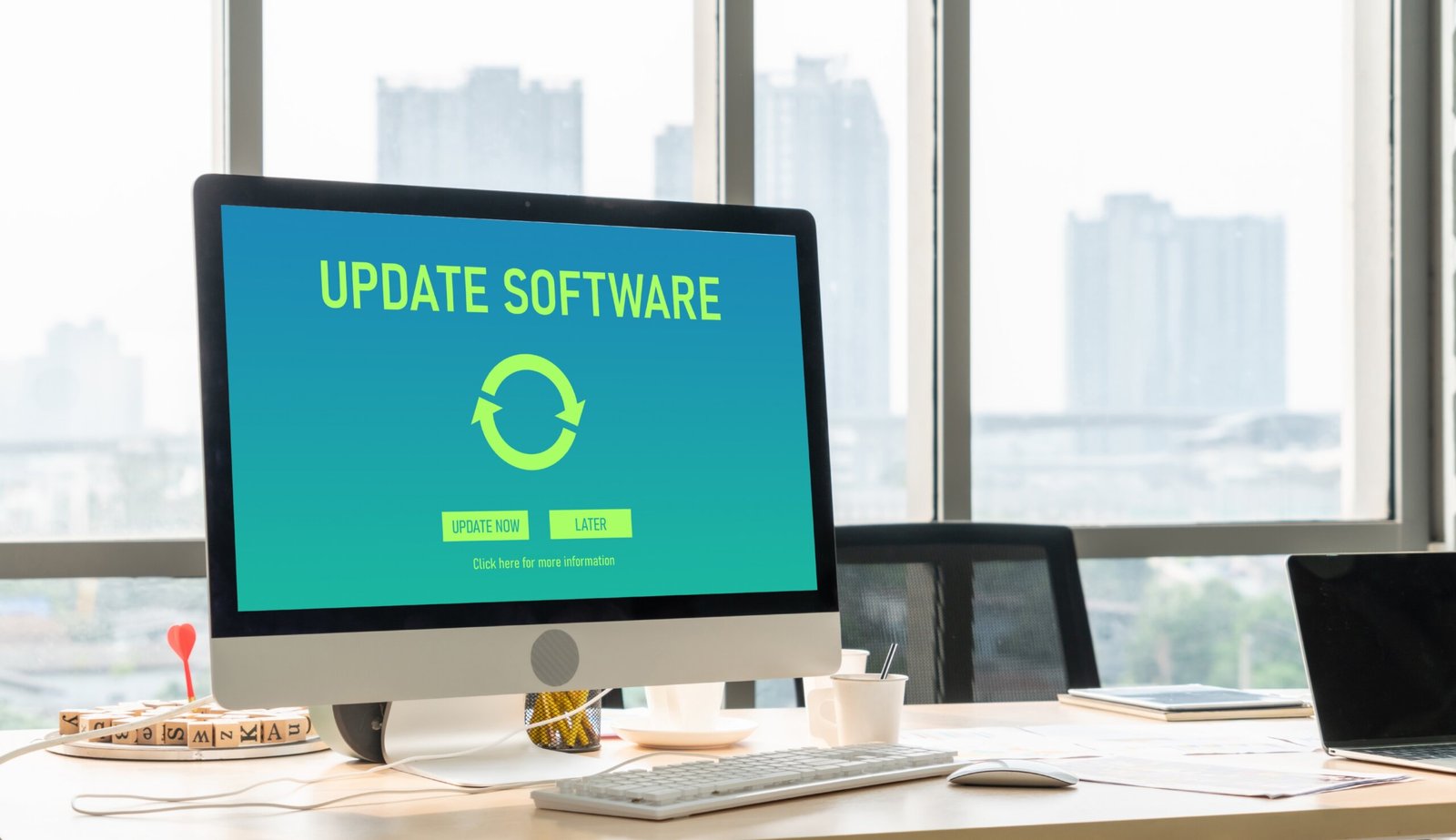Guide to Cybersecurity Patch Management
By keeping systems up-to-date and protected against known vulnerabilities, organizations improve their security posture and reduce the risk of cyberattacks.
This protection is achieved through cybersecurity patch management. Here’s what it consists of, phases, and best practices.
What is Patch Management in Cybersecurity?
Patch management is an essential practice within cybersecurity that focuses on keeping computer systems up-to-date and protected against known vulnerabilities. Patches are software updates that vendors release to fix security flaws and software bugs and improve functionality. Patch management ensures that these updates are applied promptly and effectively, minimizing the risk of exploitation by attackers.
Patch management is essential because it protects systems against cyber threats. Attackers can exploit software vulnerabilities to gain unauthorized access, steal data, install malware, or disrupt operations.
Once detected, vendors provide updates, called patches, to fix them. By patching regularly, organizations can close these security gaps and significantly reduce the risk of incidents.
In this way, security patch management is essential for business continuity. Security incidents can result in significant disruptions to operations. By keeping systems up to date, organizations minimize the risk of disruptions and ensure the continuity of their operations.
In addition, patch management contributes to system stability and performance. Updates not only fix security flaws but can also improve software efficiency and functionality. This translates into a better user experience and increased productivity for the organization.
As an associated benefit, security patch management also aids in regulatory compliance. Many industry regulations and standards, such as the General Data Protection Regulation (GDPR) and the Payment Card Industry Data Security Standard (PCI DSS), or certifications such as ENS or ISO 27001, require organizations to develop a regular security patch management protocol to keep your systems up-to-date and protected against known vulnerabilities. Failure to comply can result in penalties and loss of certifications.

Phases of Patch and Update Management
The patch and update management process generally consists of the following phases:
Identification
In this phase, vulnerabilities and necessary updates for corporate systems and applications are identified. It involves reviewing security information sources, such as vendor security bulletins, vulnerability databases, and security alerts.
The main objective of this phase is to detect, through proactive security, any vulnerability that attackers can exploit. By identifying these vulnerabilities, the organization can manage the updates and patches needed to mitigate risks.
In addition, early identification of vulnerabilities allows the organization to plan and coordinate patch deployment efficiently, minimizing the impact on daily operations.
Asset Management
During this phase, a detailed inventory of all TI assets, including hardware, software, and network-connected devices, is carried out. This inventory clearly shows the organization which systems and applications need to be updated.
Asset management involves identifying and classifying each asset according to its criticality and function. It helps prioritize patches and updates, ensuring the most critical systems are first updated. In addition, it allows the detection of obsolete or unauthorized assets that could represent a security risk.
Maintaining an up-to-date inventory of assets also makes planning and coordinating upgrades easier, minimizing the impact on day-to-day operations.
You may be interested in→ The role of cyber intelligence in the prevention of digital fraud.
Patch monitoring
In this phase, the status of the applied patches is continuously monitored to ensure that they have been installed correctly and that the systems are working as expected.
Monitoring involves using specialized tools and software that track and report patch status across all TI assets. It allows the organization to quickly detect issues or failures in patch deployment and take corrective action immediately.
In addition, monitoring helps identify new vulnerabilities that may arise after patches are applied, ensuring that systems remain protected. Maintaining constant vigilance also makes it easier to generate reports and audits, demonstrating compliance with security policies and regulations.
Patch prioritization
This phase involves evaluating and classifying the available patches according to their importance and urgency. Prioritization criteria can include the criticality of the vulnerabilities they address, the potential impact on systems, and the availability of alternative solutions.
During this phase, a risk analysis determines which patches should be applied first. Patches that fix critical vulnerabilities that attackers could exploit are usually given the highest priority. In addition, the impact on business continuity is considered, ensuring that patching does not disrupt essential operations.
Effective patch prioritization helps minimize security risks and maintain operational stability. It’s about balancing securing systems and ensuring updates are deployed orderly without causing significant disruption.
Patch testing
In this phase, patches are applied in a controlled, isolated environment, known as a sandbox, before being deployed to production systems.
The main purpose is to verify that patches do not cause unexpected problems, such as conflicts with other applications, system failures, or data loss. Extensive testing ensures the patch works properly and does not introduce new vulnerabilities.
In addition, the impact on system performance is assessed, and critical functionalities are verified to continue operating as expected. This phase also includes documenting test results and identifying issues that must be resolved before final implementation.
The patch testing phase ensures that updates are performed safely and efficiently, minimizing risks and ensuring operational continuity.
Patch deployment
The patch deployment phase is the last and constitutes a critical step in managing patches and updates in an organization. During this phase, patches that have been tested and approved are deployed in production systems.
The process begins with detailed deployment planning, including scheduling maintenance windows to minimize disruption to operations. Users are notified about the timing and expected impact of the upgrade.
Patches are then applied according to a predefined plan, ensuring that the proper procedures are followed for each system. It is essential to monitor the process in real time to detect and resolve any issues that may arise.
After deployment, additional testing is performed to confirm that patches have been applied correctly and that systems are working as expected.
Finally, the process is documented, and the success of the implementation is reported.
This phase ensures that systems are protected and operational with minimal disruption.
Best practices for patch management
In general, to maintain proper security patch management within the organization, it is recommended to:
Promoting responsibility
Accountability involves all team members understanding the importance of patching promptly and effectively. It is achieved by implementing clear policies and assigning specific roles for patch management.
In addition, fostering a culture of transparency and open communication is essential, where patch status is regularly reported and potential vulnerabilities are discussed. Ongoing training and awareness of cyber threats are also critical to ensure that staff are prepared to face challenges.
Create a recovery plan
This plan ensures that if a patch causes unexpected problems, the system can be restored to its previous operating state quickly and efficiently. A good recovery plan should include regular backups of all critical systems and data and clear procedures for reverting changes made by patches.
In addition, the recovery plan should be regularly tested to ensure its effectiveness and updated as needed. Detailed documentation and staff training are also crucial to ensure everyone knows how to act in an emergency.
By implementing a robust recovery plan, organizations minimize downtime and reduce the impact of potential failures to keep operations at their best.
Being intentional
Intentionality involves planning and executing patching with a clear and defined purpose. This includes carefully evaluating available patches, prioritizing those that address critical vulnerabilities, and scheduling their deployment at times that minimize the impact on operations.
Additionally, being intentional requires effective communication with all team members, ensuring everyone understands security patch management’s goals and procedures. It is also important to continuously monitor and evaluate the results to adjust strategies.

Find out how Kartos by Enthec can help you manage patches and updates
Kartos XTI Watchbots, the automated Cyber Intelligence platform developed by Enthec, provides organizations with information obtained from the analysis of CVEs in real time as defined in the standard.
In this way, organizations can know in real-time which corporate assets are outdated and, therefore, have exposed vulnerabilities that could be exploited to execute a cyberattack.
Contact us to learn about our cyber intelligence solutions and how Kartos can help you effectively manage your organization’s patches and updates.
